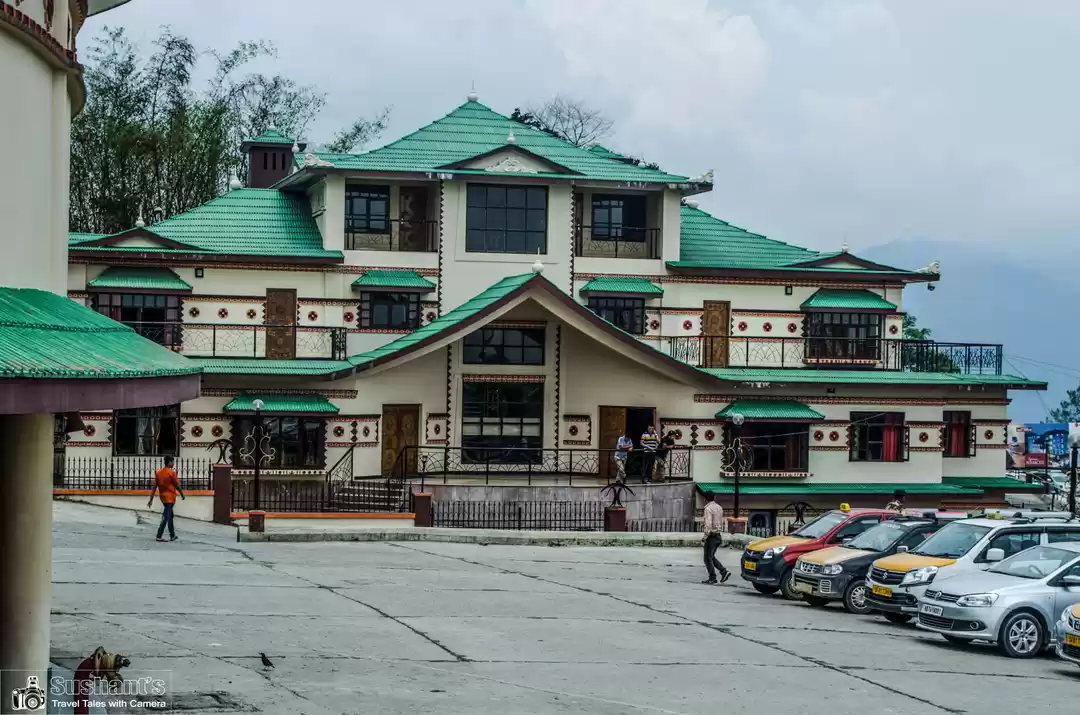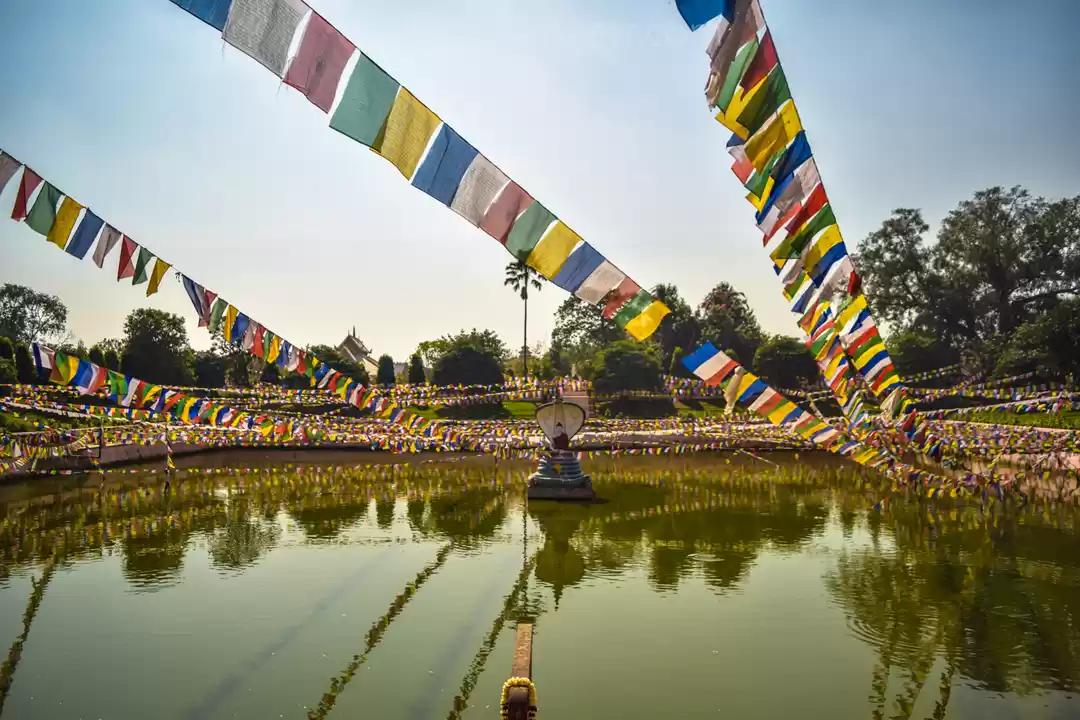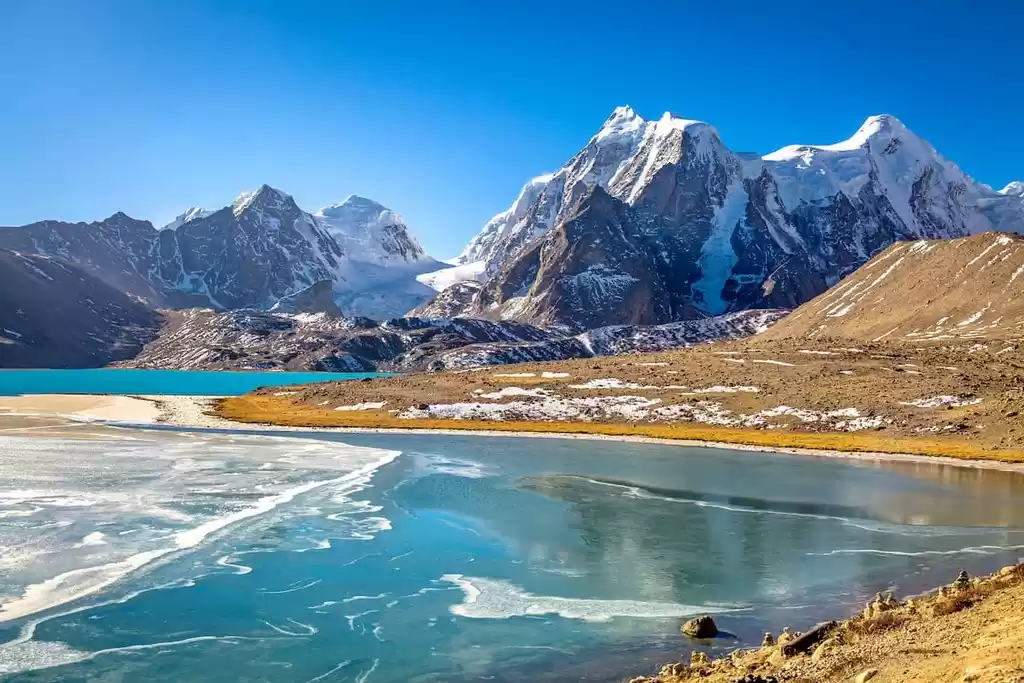Sikkim, a beautiful state in northeast India, attracts travellers with its stunning landscapes, diverse cultures, and vibrant festivals. This small state is a haven for every explorer, offering thrilling adventures in its rugged mountains, peaceful retreats in its ancient monasteries, and a deep connection with its warm and welcoming communities. Yet, the true essence of Sikkim is revealed through its year-round festivals, each a unique celebration of faith, tradition, and the changing seasons.
From the lively festivities of Losar, the Tibetan New Year, to the solemn Buddhist observances, Sikkim's festivals open a window into the soul of this enchanting state. Here are 15 festivals in Sikkim that every traveler should know about:
1. Losar (Tibetan New Year)

Losar, the Tibetan New Year, bursts into Sikkim each February, transforming the state into a kaleidoscope of colour and joyous revelry. This festival marks a time for the Bhutia community to celebrate renewal, ward off evil spirits, and usher in prosperity.
In Gangtok, the streets pulse with the energy of Losar. Drums and traditional instruments fill the air, and dancers in elaborate costumes and masks perform the 'Cham' dance, symbolizing the battle between good and evil. Families exchange gifts, homes are freshly decorated, and the scent of 'Khapse' pastries and 'Chang' barley beer fills the air.
When: February
Where: Gangtok
2. Saga Dawa (Drukpa Parinirvana)

Sikkim, rich in Buddhist traditions, reveres Saga Dawa (Drukpa Parinirvana). This festival commemorates the death anniversary of Guru Padmasambhava, who introduced Vajrayana Buddhism to the region.
During the Saga Dawa, the monasteries of Sikkim come alive with the rhythmic chants of monks, the grandeur of elaborate ceremonies, and the fluttering of colourful prayer flags.
Devotees flock to these vibrant spaces to participate in pujas and seek blessings. The belief that good deeds performed during this time are multiplied adds to the energy, encouraging acts of kindness and meditation.
The festival's significance extends beyond monastery walls, as good deeds performed during this period are believed to be multiplied. Acts of kindness, generosity, and meditation are encouraged. Many devotees undertake pilgrimages to sacred sites like Rumtek Monastery, a key seat of Tibetan Buddhism in Sikkim.
When: Held twice a year in June and December
Where: Across Sikkim
3. Chaite Dashain

Sikkim's cultural tapestry blends Buddhism and Hinduism, exemplified by Chaite Dashain, also known as Ram Navami. This festival marks the birth of Lord Rama, a revered figure in Hindu mythology.
During Chaite Dashain, temples in Gangtok and Namchi are filled with devotees performing special pujas to seek blessings and honour Lord Rama's virtues. Colourful processions fill the streets, accompanied by bhajans praising Lord Rama. The epic Ramayana is often recited, reminding everyone of the battle between good and evil. Families gather to share meals and celebrate the spiritual significance of the day.
When: March- April
Where: Gangtok, Namchi
4. Boishakh

As spring paints Sikkim with vibrant colours, Boishakh, also known as Baisakhi, adds another festive layer. This festival is celebrated in April and marks the beginning of the Bengali New Year. While primarily observed by the Bengali community, Boishakh's joyous spirit spills over, creating a festive atmosphere for everyone.
Picture bustling streets filled with people in their finest traditional attire. The sight of women in white saris with red borders and men in crisp kurtas and dhotis adds splashes of colour to the scene. The air is filled with the rhythmic beats of dhol (drums) and the melodious strains of folk music, creating a vibrant and lively atmosphere.
Boishakh celebrates new beginnings. Homes are freshly decorated, symbolizing a clean slate for the year ahead. The aroma of delectable Bengali dishes like phulkari Kochi (cauliflower curry) and luchi (deep-fried flatbread) fills the air, inviting everyone to the 'Noboborsho Bhuri Bhoj,' a traditional community feast that embodies Bengali hospitality and warmth.
When: April
Where: Sikkim (particularly observed by Bengali community)
5. Yumthang Valley Flower Festival

Spring in Sikkim bursts into vibrant colour with the Yumthang Valley Flower Festival amidst the majestic peaks of North Sikkim; Yumthang Valley becomes a photographer's paradise, carpeted with wildflowers.
The Yumthang Valley Flower Festival is a unique celebration of nature's bounty and the resilience of life in the high Himalayas. It's not just about the stunning floral display, but also about the local communities coming together to mark the occasion with traditional dance performances and cultural displays. You might even get a chance to witness the unique practice of Yak butter churning.
When: April- May
Where: Yumthang Valley, North Sikkim
6. Maghe Sankranti

Maghe Sankranti brings pleasant weather and joyous festivities to Sikkim. Known as Makar Sankranti elsewhere in India, this three-day festival is particularly significant for Sikkim's Nepali community.
Marking the first day of the tenth month in the Bikram Sambat calendar, Maghe Sankranti signifies the end of the winter solstice and the arrival of warmer days, sparking a spirit of renewal. Fairs pop up across Sikkim, the largest being the Jorethang Maghe Mela.
Held on the banks of the Rangit River in South Sikkim, the Jorethang Maghe Mela is a vibrant celebration and significant tourist attraction. The fair features traditional dance performances, cultural programs, and stalls filled with local handicrafts, textiles, and regional treats.
A key aspect of Maghe Sankranti is the holy dip in the Teesta and Rangit rivers. Devotees believe this ritual purifies the soul, washes away sins, and brings blessings for the year ahead. These river confluences become the festival's heart, drawing pilgrims and revellers alike.
When: January
Where: Across Sikkim (biggest fair in Jorethang, South Sikkim)
7. Drupka Teshi

Drupka Teshi, or Drug-pa Tse-zhi, is a revered Buddhist festival in Sikkim celebrated on the fourth day of the sixth month of the Tibetan calendar. It commemorates Buddha's first sermon, the "Turning of the Wheel of Dharma," where he introduced the Four Noble Truths and the Eightfold Path.
Monasteries across Sikkim celebrate with vibrant prayer flags, monk chants, and special pujas. Devout Buddhists meditate on the Four Noble Truths and practice acts of kindness, compassion, and generosity.
When: July or August
Where: Monasteries across Sikkim
8. Phang Lhabsol

Phang Lhabsol celebrated on the 15th day of the 7th month of the Tibetan calendar, is a significant festival in Sikkim that intertwines ancient traditions with vibrant cultural expressions. "Phang Lhabsol" means "to witness and honour," particularly the majesty of Mount Kanchenjunga, Sikkim's revered guardian deity. This festival also commemorates the 15th-century "Blood Brotherhood Treaty" between the Lepcha and Bhutia chiefs, fostering unity and peace under Mount Kanchenjunga's gaze.
The most elaborate festivities occur at Tsuklakhang Monastery in Gangtok, where monks perform special pujas and the energetic "Pangtoed Chaam", or warrior dance, showcasing Sikkimese bravery and resilience. Beyond the celebrations, Phang Lhabsol is a time for reflection, with devotees offering prayers for peace, prosperity, and health and families strengthening their bonds over shared meals.
When: August or September
Where: Tsuklakhang Monastery, Gangtok (celebrated across Sikkim)
9. Bumchu

Bumchu festival centres around a sacred pot of water, the "Bumchu." On the festival day, anticipation fills the air as Buddhist monks (Lamas) unlock the ancient pot, its seal untouched since the previous year. The water level inside is believed to forecast Sikkim's fortunes for the coming year. A hushed crowd watches as the Lamas carefully extract and distribute a small portion of the sacred water, offering each devotee a blessed sip believed to bring good fortune. After the distribution, the Lamas refill the pot with fresh water from the Rathong Chu River, reseal it, and prepare it for the following year.
The Bumchu festival is more than a ritual; it's a vibrant celebration of faith, tradition, and respect for nature. Visitors gain profound insight into Sikkim's spiritual heritage and beliefs.
When: January
Where: Tashiding Monastery, West Sikkim
10. Losoong

Marking the end of the harvest season and the start of the Tibetan New Year in the tenth month of the Tibetan calendar, Losoong bursts into life with a kaleidoscope of colours and infectious energy. Revered monasteries such as Phodong, Rumtek, and Tsu-La-Khang become vibrant hubs where monks conduct special religious ceremonies while the rhythmic beats of drums and soulful melodies accompany the famed 'Chaam' dances, depicting the battle between good and evil.
The festival extends beyond the monastery walls with traditional archery contests and family feasts, where delicious Sikkimese delicacies fill the air.
When: December
Where: Phodong Monastery, Rumtek Monastery, Tsu-La-Khang Monastery (celebrated across Sikkim)
11. Tihaar

Tihaar, also known as Deepawali or Yamapanchak, is a vibrant five-day festival in Sikkim that shares similarities with Diwali, the renowned Festival of Lights in India. Each day of Tihaar is dedicated to different aspects of life and prosperity, offering a unique touch to Sikkim's festive calendar.
The celebration begins with Kaag (crow) Tihaar, honouring crows with food and blessings, followed by Kukur (dog) Tihaar, which venerates dogs for their loyalty. On the third day, Gai (cow) Tihaar celebrates cows as symbols of prosperity. The fourth day mirrors Diwali's essence, illuminating homes with diyas to signify the victory of light over darkness. The festival concludes with Bhai Tika, where sisters apply colourful tika on their brothers' foreheads, reinforcing sibling bonds.
When: October-November
Where: Across Sikkim
12. Tendong Lho Rum Faat

Tendong Lho Rum Faat is a heart-warming three-day celebration highlighting the Lepcha people's deep connection to their ancestral land. According to legend, a colossal deluge once submerged Mayel Lyang, the ancient name for Sikkim, and Mount Tendong, revered by the Lepchas, miraculously rose to provide refuge to their ancestors. This festival, translating to "Offering Prayers to Mount Tendong," expresses gratitude for this mythical salvation. It begins with prayers to Mount Tendong, with families crafting miniature mountain replicas from nine specific stones for worship.
The heart of the festivities is in South Sikkim, especially around Tendong Hill near Namchi, but the spirit extends to Gangtok, where Lepcha culture is celebrated through literary programs and performances. The final day features an exhibition of traditional Lepcha cuisine, costumes, and ornaments, showcasing the Lepcha community's rich heritage and artistic expressions.
When: August
Where: Tendong Hill in South Sikkim
13. Indra Jatra

Indra Jatra, also known as "Yenya," is a vibrant explosion of colour and joy, marking the biggest festival for the Nepalese Newar community in Sikkim. This annual celebration honours Lord Indra, the Hindu God of Rain, and seeks his blessings for bountiful monsoons.
Legend tells the tale of Lord Indra's capture in the Kathmandu Valley for stealing fragrant Parijat flowers. Upon realizing his identity, the people released him, establishing this vibrant festival in his honour. This rich history adds depth and meaning to the celebration.
Imagine bustling streets adorned with colourful flags, the rhythmic beats of dhol drums filling the air, and elaborate chariot processions carrying deities through the city. You can also expect to see captivating cultural dances, savour delicious Nepali cuisine, and immerse yourself in the joyous spirit of the festival.
When: late August or September
Where: Durbar Square in Gangtok
14. Durga Puja (Dassain)

Durga Puja is the pinnacle of celebration for the Hindu Nepalese community in Sikkim, akin to the grandeur of Dussehra observed across India. Across nine glorious days, from Prathama to Navami, intricate pujas are performed in reverence to Goddess Durga, adorning homes with vibrant decorations.
The tenth day is marked by a touching tradition where elders bestow blessings upon younger generations with symbolic "tika" marks and heartfelt exchanges of gifts, strengthening familial ties.
Finally, the eleventh day witnesses a magnificent procession through the streets, carrying the resplendent statue of Goddess Durga to a serene water body for immersion, bidding farewell and drawing the curtains on the jubilant festivities.
When: September-October
Where: Across Sikkim
15. Lhabab Dhuechen

Lhabab Dhuechen, translating to "Descent from Heaven," illuminates Sikkim with the radiance of Buddhist devotion. This cherished festival, occurring on the 22nd day of the 9th month of the Tibetan lunar calendar, resonates with the profound teachings of Lord Buddha. It reverberates with acts of compassion and enlightenment, symbolizing the Buddha's descent from the celestial realm of Tushita after imparting wisdom to heavenly beings.
Amidst the devout prayers and rituals in monasteries, devotees seek blessings and engage in meritorious deeds, believing their significance is magnified on this auspicious day. Yet, beyond the spiritual realm, Lhabab Dhuechen infuses the air with festivity, adorning homes with prayer flags and uniting families over special meals, intertwining religious reverence with vibrant cultural traditions across Sikkim.
When: November
Where: Monasteries Across Sikkim
To conclude, Sikkim's festivals are profound experiences that touch the depths of the soul. They allow us to forge connections with age-old traditions, embrace the rich tapestry of diversity, and rejoice in the enduring values that unite humanity across cultures and generations.
Planning to visit Sikkim soon? Do not miss out on our Guide to help you explore the best of the state.
Think we missed out on something? Let us know in the comments section below. Or write about it here and earn Tripoto Credits!
Follow me on Instagram and explore this world through my eyes!






























